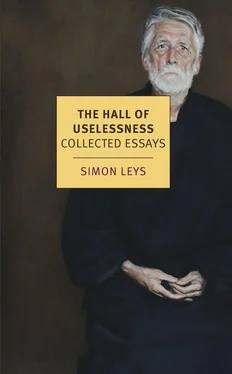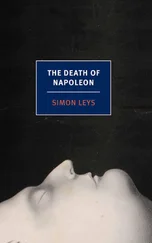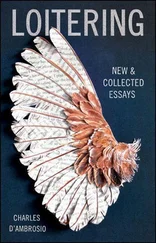Léon Bloy commented on the famous passage of St. Paul—“In this life we perceive things obscurely, as if in a mirror”—wondering whether the main point of the apostle’s observation was that our world presented an inverted image of the other world. This would suggest, for instance, that the pleasures of the living are merely a reflection of the torments of the damned.
And when you come to think of it, it is easy to see how the delights of Hawaii, a cruise ship or a holiday resort could provide a fairly convincing image of hell.
COINCIDENCE
I was working on my translation of The Analects of Confucius and I had just reached the passage (12.18) “Lord Ji Kang was troubled by burglars. He consulted with Confucius. Confucius replied, ‘If you yourself were not covetous, they would not rob you even if you paid them to.’” On that same day, my little boat was broken into, and I lost a few small things to which I had the weakness to be attached.
I should have drawn some comfort from this coincidence. Indeed, I cannot help but feel that, at times, the supreme teacher is merely addressing one side of my psychology, which resembles to a deplorable extent that of Ah Q, the famous satirical character (created by Lu Xun) who invented a way to transform all the defeats of his wretched existence into as many “moral victories.”
Nevertheless, it remains true that one should own only those things one can possess casually.
SHADES OF SALAZAR
I just found in an old notebook a press clipping that I must have cut from a news magazine about thirty-five years ago. At the time I thought it might provide one day an interesting argument for a play or philosophical tale. Here it is:
SHADES OF SALAZAR
Though the 36-year rule of Portugal’s Antonio de Oliveira Salazar ended last year, the old man is not yet aware of it. Still immobilised after a stroke and a coma 13 months ago, Salazar calls cabinet meetings, and his old ministers faithfully attend — even though some of them are no longer in the cabinet. No one has found the courage to tell the 80-year-old dictator that he has been replaced.
But I never managed to do anything with it. There are realities upon which no fiction can improve.
DEADLY PERFECTION
The Pazzi Chapel is probably one of the purest expressions of the Florentine Renaissance; the austere clarity of its lines, the balance of its forms, the refinement of its proportions, the rigorous unity of its composition organise all the various decorative elements and subordinate them to a leading concept. Nothing has been left to chance, and therein may lie its only flaw. Such perfection stands like a no-entry sign, barring the way to any interference from life, to any improvised initiative that could disrupt this serene harmony.
The problem is even more evident in the admirable church of San Spirito (another Brunelleschi masterpiece, on the other side of the Arno), because this monument happens also to be an active parish church. There is therefore no possibility of turning it into a museum insulated from the vulgar contaminations of everyday life. And one can immediately gauge the extent to which its very perfection makes it vulnerable to the slightest aggressions from common reality. An exuberant and florid baroque altar in a side chapel, an ugly modern plaster saint daubed in garish colours in a corner, an original window that has been walled in for some trivial reason of convenience, another window that has been arbitrarily enlarged — all these clumsy additions and transformations make a cacophony of jarring notes; they amount to as many outrages. To borrow a boxing term, the monument cannot absorb any punches; every minute alteration is a savage blow that stuns and disfigures.
In contrast, the great medieval cathedrals, which were not designed as individual solutions to aesthetic problems but presented a collective attempt at embracing a cosmic totality, were usually left unfinished. By definition, it should not be possible ever to finish them. They remain in a state of openness; they have a limitless capacity to welcome and integrate the contributions of successive generations; they have strong stomachs; they happily swallow and digest the alluvia of the centuries, the styles of diverse ages.
In this sense, the great cathedrals — disparate and alive — are truly transpositions into stone of St. Augustine’s vision: “I no longer wished for things to be better, because I began to consider the totality. And in this sounder perspective, I came to see that, though the higher things are obviously better than the lower ones, the sum of all creation is better than the higher things alone.”
LIVING IMPERFECTION
Perfection demands it be preserved in a sterile glass case, sheltered from the weather, untouched by time, abstracted from life, mummified in a museum. By its very nature, it is rigid, brittle and unadaptable. But if perfection can be deadly, the corollary is that it is imperfection that ensures the survival of an artistic creation. For only what is imperfect, incomplete, unfinished, remains susceptible to modification and adaptation. It affords a margin for compromise and transformation.
Instead of being fatally dented by the various accidents of life, imperfection can be harmoniously completed by them. Michelangelo said that a statue was not really finished unless it had rolled down from a mountain. In different places, at different times, great artists have always remained aware of this. In classical Japan, a famous master of the art of gardens instructed one of his disciples to clean the garden. The zealous disciple executed his task to perfection. The master came to inspect his work and frowned. Without a word, he walked to a young tree and gave its trunk a vigorous kick. Three dead leaves fell upon the immaculately manicured grass. The master smiled at last: “Now it looks a little better.”
Degas used to curse the deadly pervasiveness of impeccable taste: “They will eventually design artistic piss-pots that will make their users suffer from retention of urine.” And Auden, visiting I Tatti, the Italian mansion of the great aesthete and art collector Bernard Berenson, suggested one improvement for the exquisitely decorated sitting room: “One should just add on the sofa a purple satin cushion embroidered with Souvenir from Atlantic City .”
We rightly deplore the degradation of so many admirable monuments of the past, but we should also derive some comfort from the thought that many hideous modern structures will make quite attractive ruins one or two hundred years from now.
The beauty of Angkor is truly beyond words. Neither descriptions nor photographs can capture it, for Angkor is also made of all the scents and sounds of the forest, the drumming of a sudden downpour on the leaves, the buffaloes bathing in the moats at sunset, the sound of water dripping from the stone vaults after the late afternoon storm, the millions of insects whose concert turns the evening air into a massive block of deafening noise, with stunning breaks of pure silence. That said, one must also acknowledge that Khmer art is not always of supreme quality. The miracle of Angkor is the product of a fortuitous encounter between the work of man and the work of nature. The French curators who formerly looked after the site understood this. What they were preserving with so much skill and sensitivity was not the original Angkor built by the sometimes pedestrian Khmer sculptors and architects, but the inspired and fragile ghost of Angkor, which was created by the erosion of eight centuries and the invasion of the jungle.
To an extent, one could say the same thing about Venice. Venice is so much more than the sum of its parts, or rather it is quite different from that sum. I am not being sacrilegious when I venture to state what is, after all, historical evidence: 500 years ago, Venice was very much the equivalent of what are today Chicago or Dallas. This dream world, this exquisite shimmering mirage of water and marble cupolas, was once a brutal display of entrepreneurial wealth, a nouveau-riche show of arrogant opulence, a flashy triumph of parvenu bad taste.
Читать дальше












